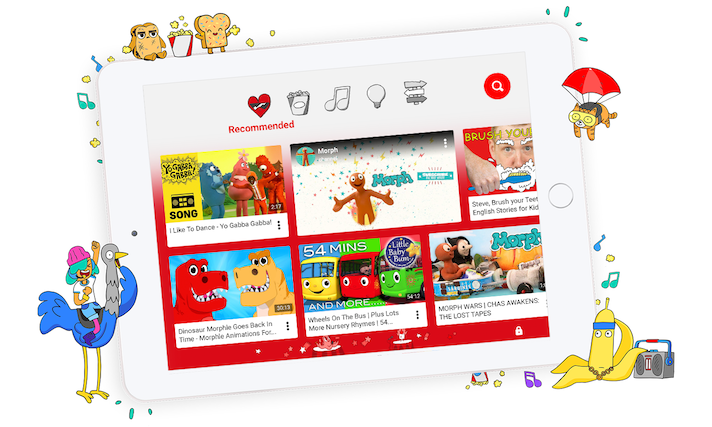Help your children learn English with Youtube Kids
YouTube is beneficial if you are not a fluent English speaker, and want a more fluent model of English for your child. Helped along by the visuals of their favourite cartoon, children can watch their favourite characters involved in adventures, while absorbing the language.
Repetition is also important for language learning.
It helps us remember important words and expressions. One of the great things about watching something on YouTube is that you can watch it over and over again. If your child loves what they are watching, they will do this naturally – possibly until you wonder why they aren’t getting bored.
The more they watch, the more they will understand, eventually using the language themselves.
Where to start?
There are lots of great cartoons and songs available on YouTube for young children. Children whose home language isn’t English can follow the visuals and get a feeling for the sounds of the English language.
Start by watching your child’s favourite programme on YouTube, but in English. Learning Time with Timmy is a learning series for YouTube developed by Aardman and the British Council. Each week, a new episode takes you into the world of Timmy and his friends at nursery.
The language is designed for children who may be hearing English for the first time. There are short activities and a recap, which help children remember the vocabulary from the episode.
Show interest while watching
Many parents worry about their children having too much screen time.
One way around this is to watch the programme along with your child. By getting to know the characters and storylines, you are showing a genuine interest in what your child loves watching.
You can build on what your child is learning while watching the programme, and connect it to their own experiences:
We’ve got a beach ball too!
What colour is our beach ball?
Your tricycle’s bigger than that one!
You and your friends love playing on the seesaw too, don’t you?
Who played on the seesaw with you last week?
You can also ask questions to prompt your child to think about what happens next:
Oh dear, what do you think will happen now?
My goodness, how many footballs have they got?
Activate your child’s learning after watching
YouTube programmes offer learning beyond the screen.
Take a theme from the programme and use it to continue your child’s language learning journey.
If the programme’s theme was the sea or the colour blue, find and count all the blue things around the house. Your child will practise the colour blue, and also their numbers in English. Your child can also draw pictures or make plasticine models of their favourite characters or scenes. You can then describe the characters’ physical characteristics (eyes, hair, tall, short, fat, thin, long, big), how they are feeling (happy, sad, tired) or what colour they are.
If there are jungle animals in the programme, dig out your child’s toy animals from the toy box and describe them together (fur, teeth, wings, legs, long neck, etc). If there were puppets in the episode, make your own sock puppets and introduce yourselves:
Hello, I’m Sam the snake, I live in the jungle, and I’m hungry!
Maybe your child would rather dress up as a favourite character. This is an opportunity to talk about clothes (cape, goggles, belt), colours, and parts of the body (put your arms through here, put the boots on your feet). Once they are dressed up they can act out a favourite scene, giving them a chance to use all of that language they have been hearing in their favourite YouTube programmes.
Follow your child’s lead and take photos of what they like best. This could be toy cars, animals, dolls or teddies. Make a mini photo album and label photos with names. Your child might be able to teach you some English words to describe what they have made, drawn or are wearing.
Be a curious onlooker
If all of that sounds exhausting, observing your child while playing is just as important.
Maybe they are using English from their favourite programme in their imaginary play with friends or toys. It might be tempting to interrupt, but your child will appreciate you realising that they can do something amazing – using English while playing – without your help. Here are some things to look out for:
- using English words to describe some of their toys
- using English expressions in imaginary play
- singing a song in English from one of their favourite programmes while playing
These moments of genuine language production show deep learning, so don’t miss them.
Whatever steps you take to support your child and increase their learning, make sure you have fun. An enjoyable experience is a memorable one.
Watch new episodes weekly on the the LearningTime with Timmy YouTube channel. Each episode is based on tried and tested lesson plans.
The new online animated series is the latest addition to the Learning Time with Timmy portfolio, giving two- to six-year-olds around the world an opportunity to learn English.
The series is not available on YouTube in France, Germany and Australia. Instead, the series will be aired by a local television broadcaster soon.

Leave a Reply
You must be logged in to post a comment.